If you have a garden or a small field you probably ran into some problems related to weeds. You have to weed your garden regularly, otherwise your veggies will be overgrown by unwanted plants. Some plant species are especially hard to get rid of (e.g. stinging nettle, couch grass, goldenrod etc.) and you probably would like to never see them again among your crops. Most of the weeds end up as compost, but what if I told you, that you can also use them as a source of food? Most weeds are edible, so you can technically turn weeding into harvesting.
Here I’ll give you some directions on how to use some of the commonest weeds in cookery. I’ll also share some useful recipes for each plant species.
Stinging Nettle
Nettles can grow nearly anywhere, however, they prefer nitrate-rich soil. Their underground rhizomes allow them to spread rapidly, even without seeds.
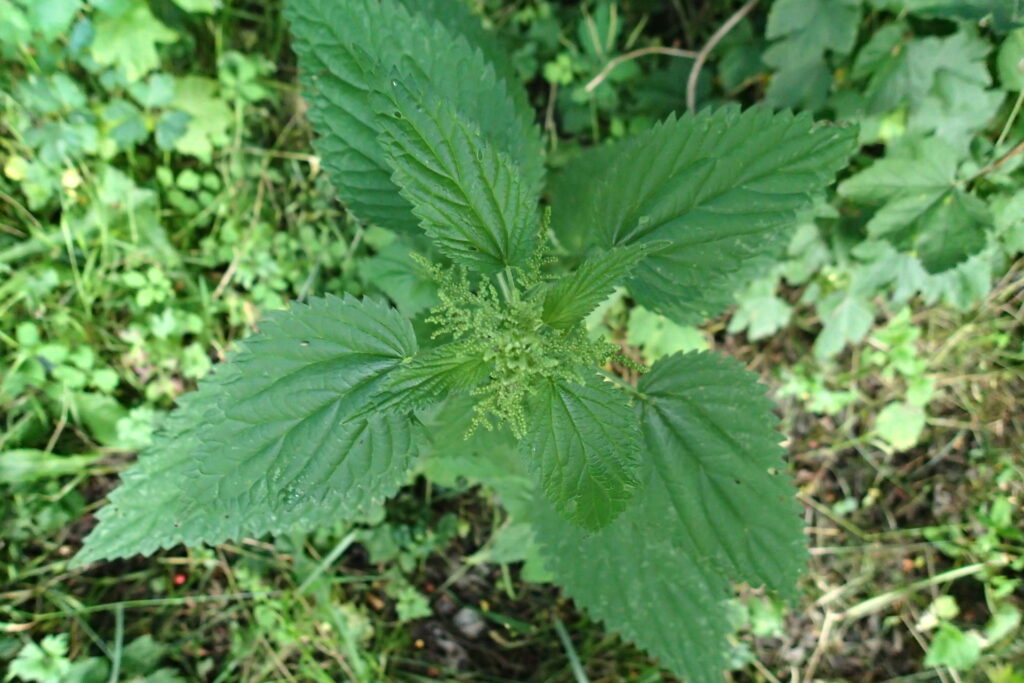
It won’t be a good idea to eat these raw — they’ll sting you and the substances present in the plant can poison you when eaten in larger quantity. Heat neutralises all the harmful compounds, that’s why you should always eat nettles cooked. Nettles are very nutritious, they contain a lot of iron plus vitamins A and C.
This plant is very versatile in the kitchen. You can bake its leaves and eat them like crisps. You can also make a nettle soup or sauté it like spinach. Nettle tea is also quite tasty, but most importantly, it has medicinal properties — it helps with blood purification. You can also use nettle infusion or juice as a plant-based rennet when making cheese.
My personal favourite way to have nettles are nettle fritters. I learned about them from the book “Kuchnia Słowian” (“Slavic Cookery”) by Hanna Lis and Paweł Lis. The recipe goes as follows:
Nettle Fritters
Ingredients:
- 10 handfuls of young nettles (alternatively nettle tops)
- 2-3 tablespoons of wheat flour
- Salt
- Oil or other fat (for frying)
Wash your nettles and chop them finely. Sprinkle the flour and a pinch of salt all over the nettles, then mix together so that the flour is distributed evenly. Slowly add water by sprinkling it and mixing between subsequent portions of water. Stop adding liquid when the flour starts absorbing the moisture and gluing nettles together. We don’t want it to turn into dough, we just want to be able to form small, semi-coherent cookies out of the pulp. Heat the pan with a generous amount of oil. Scoop portions of the pulp with a spoon, place it in the pan and gently press to achieve a cookie-like shape. Fry the fritters on both sides until they become golden brown (they’ll be darker than usual fritters because it’s mostly nettles). You can use some paper towels to soak up excess oil from the fritters. Serve with garlic sauce or other cream-based dressing.
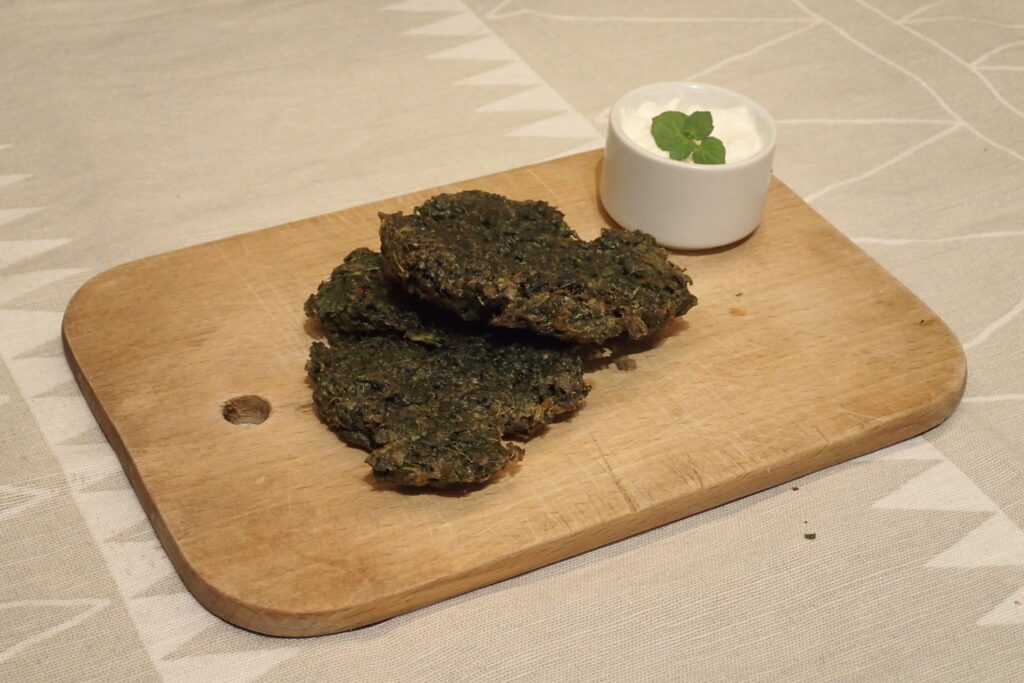
Pigweed/White Goosefoot
This is an interesting weed. Most people hate pigweed, because it’s a fast-growing tall plant that easily overpowers other vegetables, but at the same time quinoa (which is also a type of pigweed) is considered to be a tasty and luxurious grain to eat. Generally, pigweed was once cultivated in Europe as a vegetable, it was also eaten by Native Americans. It’s still used in Japanese cuisine to this day.
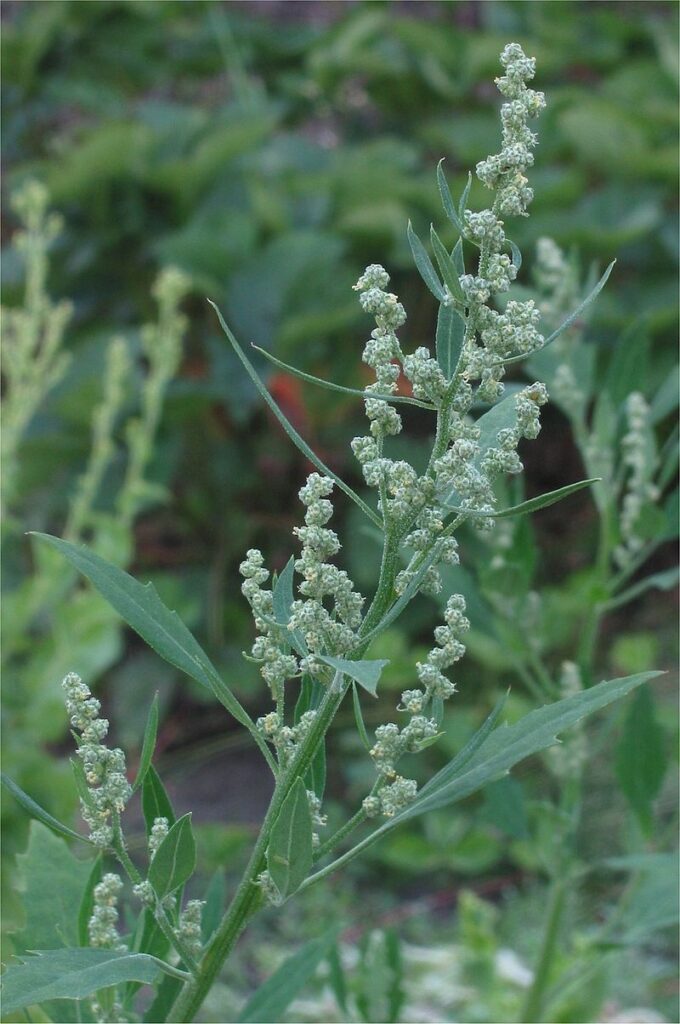
Pigweed leaves and seeds can be both used in cooking. Young leaves and stems can be eaten fresh, older leaves should be boiled prior to consumption to get rid of the bitterness. Old stems become tough and should be avoided. Seeds are very nutritious, rich in carbohydrates and plant protein. They can be used just like quinoa, but you should soak them in water overnight to get rid of saponins.
The following recipe was inspired by wonderful books of Małgorzata Kalemba-Drożdż, from which I learned a lot about using wild plants in cooking.
Pigweed à la Asparagus
Ingredients:
- 200 g of young pigweed stems with leaves (from plants no higher than 18 cm)
- 2 tbsp olive oil
- 1 tbsp vinegar
- 1 tsp Dijon mustard
- 1/2 clove of garlic
- Salt
Wash the pigweed and blanche for 3 minutes in salted water. Mince the garlic, mix with olive oil, vinegar and mustard until it becomes an emulsified sauce. Serve pigweed stems dressed with the sauce.
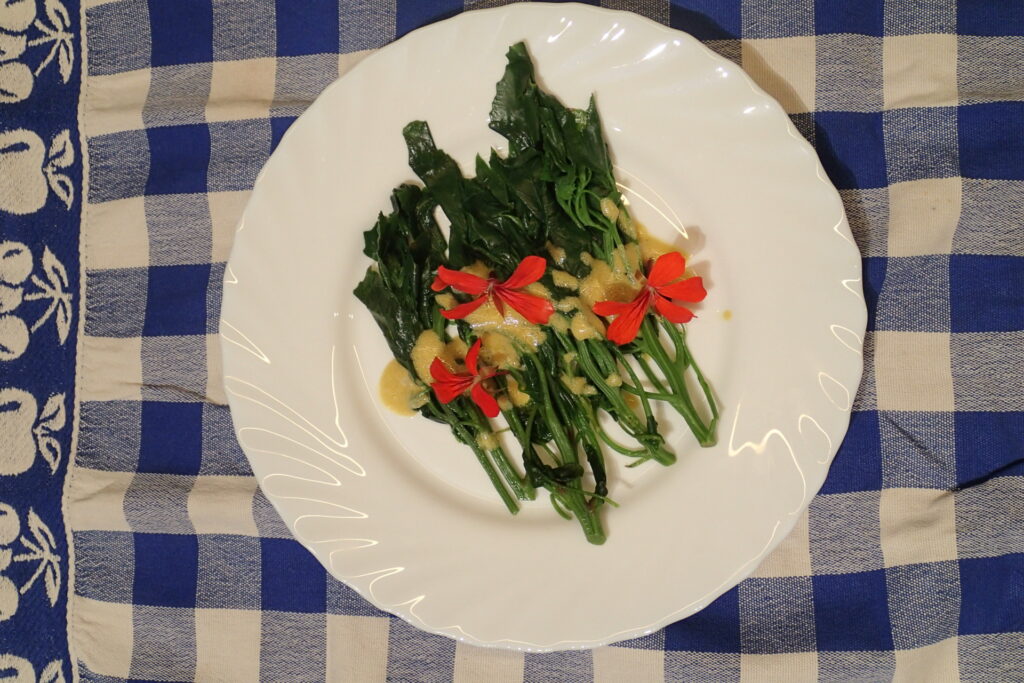
Chickweed
It has many different subspecies, each one looking a bit different, so make sure the plant you’re using is from Stellaria family. Stems, leaves and flowers are edible and have a pleasant, grassy flavour. You can eat them raw or cooked. Chickweed is a very fast-growing weed and once it settles in your garden, it’s mostly impossible to get rid of it. However, when harvesting chickweed, you can use its “indestructability” to your advantage. If the plant is too old to eat (the stems are very stiff and leaves are bitter in taste) you can simply cut the plant and, in a few days, fresh stems will emerge. You can harvest chickweed all year long, as it can grow even under the cover of snow.
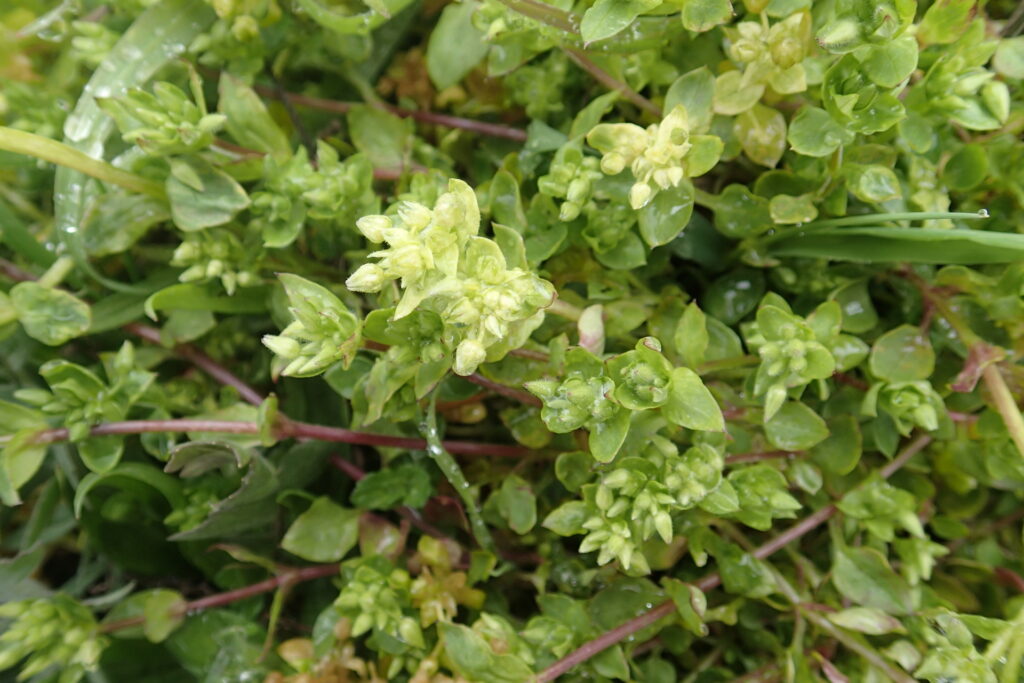
The recipe below was inspired by a similar one featured in a book “Poland’s Edible Wild Plants” (Dzikie rośliny jadalne Polski) by Łukasz Łuczaj. However, I decided to make this soup using chicken, not frogs as the author suggested.
Chickweed Soup
Ingredients:
- A large bunch of chickweed stems and leaves
- 1 potato
- 1 onion
- 1 chicken drumstick
- 1 tbsp sour cream
- 1 tbsp olive oil
- Salt
Dice the onion and potato. Wash the chickweed and chop it (you don’t have to be very precise with that). Separate the meat from the bone of the drumstick, cut the meat in smaller chunks. Heat the olive oil on the pots bottom, add chicken and slightly brown it. Add all remaining ingredients (including the bone, excluding the cream) to the pot with a teaspoon of salt, cover with 1,5 l of water and bring to a simmer. Boil for another 15 minutes, take out the bone, salt to taste and serve with cream.
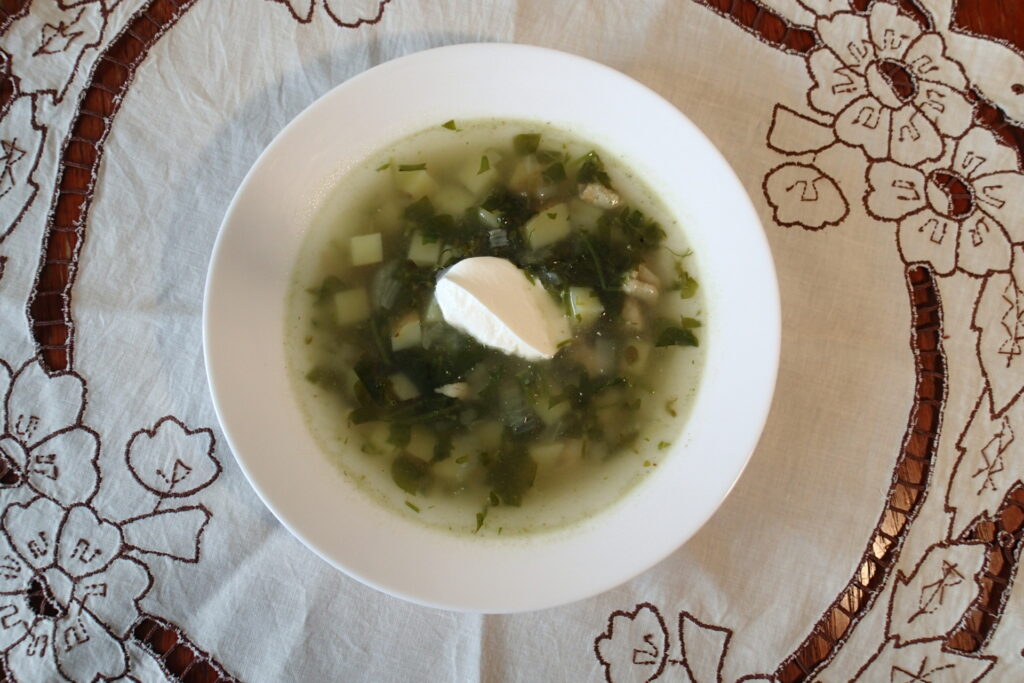
Ground Ivy
This one I have a lot of good memories with. You can find it in most forests and lots of gardens, nobody cares if you harvest it or not, but it adds a phenomenal aroma to your dishes. Additionally, ground ivy helps with digestion, so it’s a great idea to use it with fatty foods. I personally love using this plant when making egg dishes or when cooking a whole fish on the fire (I usually stuff the belly of the fish with ground ivy and nettles). You can also dry its leaves to keep as another herb in your spice collection.
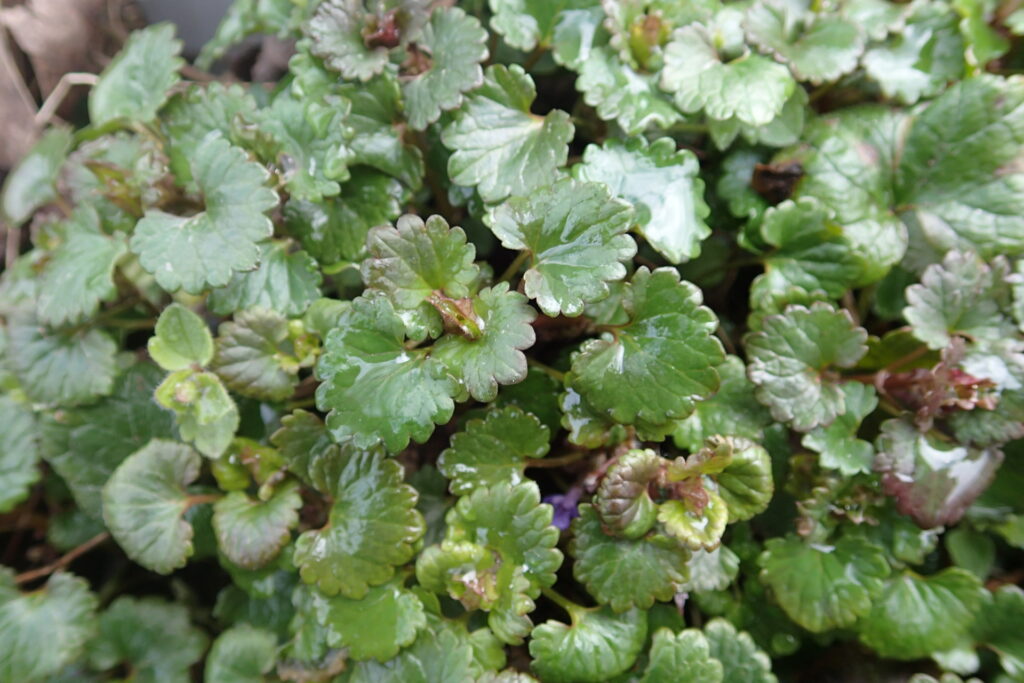
To start working with ground ivy I really recommend making some simple scrambled eggs, using ground ivy as the only spice. If anyone for any reason needs direction on how to make scrambled eggs with weeds, here’s the recipe:
Ground Ivy Scrambled Eggs
- A handful of ground ivy leaves
- 3 eggs
- 1 tbsp butter
- Salt
Break the eggs into the bowl, add a pinch of salt or two, and whisk well to break down the egg structure. Wash the ground ivy and chop it fine, add to your eggs, and mix it in. Add butter to the pan and put on medium heat. When it starts to simmer, pour the egg mixture in. Mix slowly all the time until the eggs are set. When eggs reach the desired consistency serve them immediately.
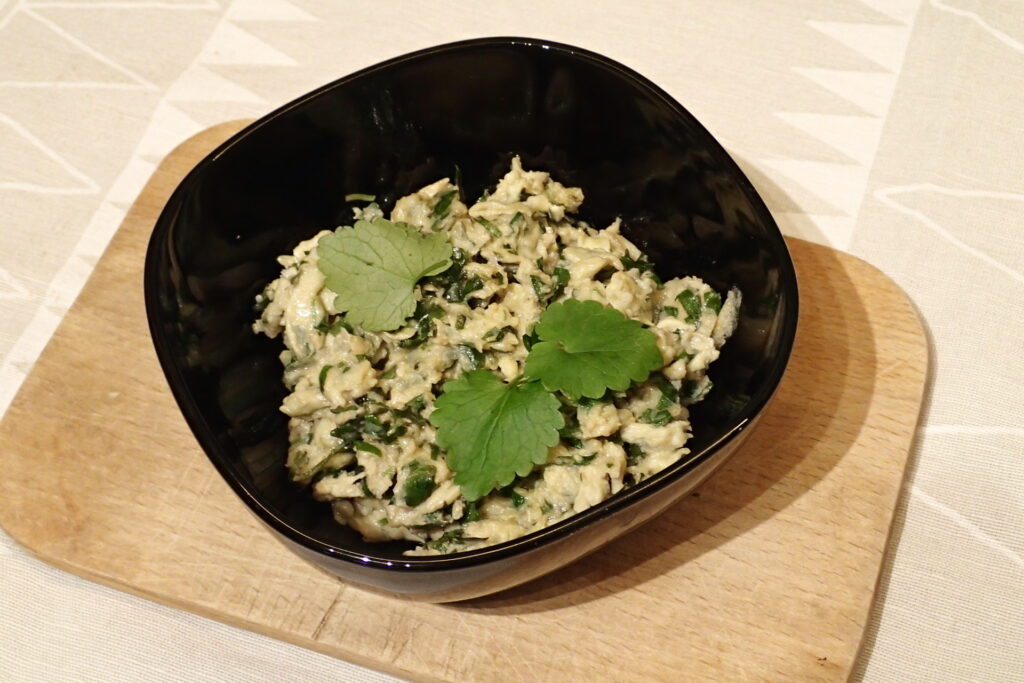
I hope the recipes above will serve you well. If you try making them, I’ll be more than happy to read your feedback on how the dish turned out. These four plants are enough for today — the next four will come in another weed-related post.

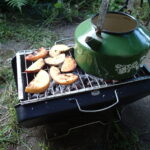

Hi,
Great article! Any recipe ideas for nettle seeds?